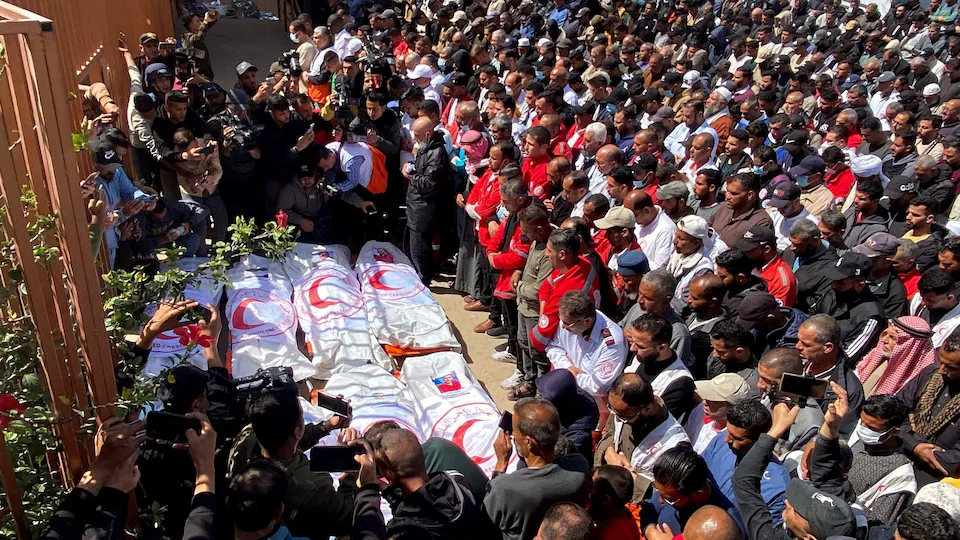Israel ordered a mass evacuation in Rafah, a southern city in Gaza, signaling an intensified military operation. This decision followed the discovery of a mass grave containing the bodies of emergency personnel who had gone missing after responding to a strike. The evacuation order affected large areas of Rafah, where many families had sought refuge after a temporary ceasefire. The Israeli military directed residents to move to Mawasi, a designated humanitarian zone.
Over the past week, Israel launched airstrikes and artillery attacks in Rafah, pushing deeper into the city. Troops entered several neighborhoods, displacing civilians who had recently returned under the ceasefire. Residents described heavy bombardments and gunfire, forcing them to flee once again. The Israeli government sees controlling Rafah as crucial to cutting off Hamas’s access to weapons and supplies.
Intensified Strikes, Targeted Emergency Responders, and Discovery of a Mass Grave
Palestinians who fled Rafah recounted terrifying experiences as Israeli strikes intensified. Some described witnessing the deaths of neighbors and family members. On March 18, Israel broke a two-month ceasefire, launching a night of airstrikes that killed over 400 people. The situation worsened when Israeli forces targeted emergency responders, leaving paramedics and humanitarian workers missing.
On March 23, the Palestine Red Crescent Society (PRCS) lost contact with an ambulance dispatched to assist victims in Rafah. Paramedics searching for their missing colleagues soon discovered the ambulance near the United Nations and Gaza civil defense vehicles. Witnesses reported that paramedics had been shot and wounded. When additional ambulances were sent to rescue the injured, they also went missing.

Days later, the bodies of missing emergency responders were discovered in a mass grave in Rafah. The victims included eight paramedics, six civil defense workers, and one U.N. staff member. PRCS condemned the killings as a “massacre,” emphasizing that the responders were wearing uniforms and operating clearly marked vehicles. The U.N. humanitarian affairs office also condemned the attack, describing it as a grave violation of international humanitarian law.
Israeli Military Actions and Civilian Casualties Amid Ongoing Gaza Conflict
The Israeli Defense Forces (IDF) claimed that their troops fired on the vehicles because they appeared suspicious, stating that some contained Hamas and Islamic Jihad fighters. However, they did not provide evidence to support this claim. The IDF later acknowledged that some of the targeted vehicles were ambulances and fire trucks but maintained that the responders had moved without prior coordination.
Palestinians attempting to evacuate reported being shot at by Israeli forces. Witnesses described seeing civilians, including women and children, killed along evacuation routes. The IDF denied these allegations, stating that it does not target civilians and facilitates safe evacuations. However, accounts from residents and humanitarian workers contradict this, with reports of people being shot as they attempted to flee.
The ongoing Israeli military campaign in Gaza has killed over 50,000 people, according to the Gaza Health Ministry. The war began in response to the Hamas-led attacks on Israel on October 7, 2023, which killed approximately 1,200 people and resulted in the taking of 251 hostages. As Israeli operations expand, concerns grow over the humanitarian crisis, displacement of civilians, and continued loss of life in Gaza.


